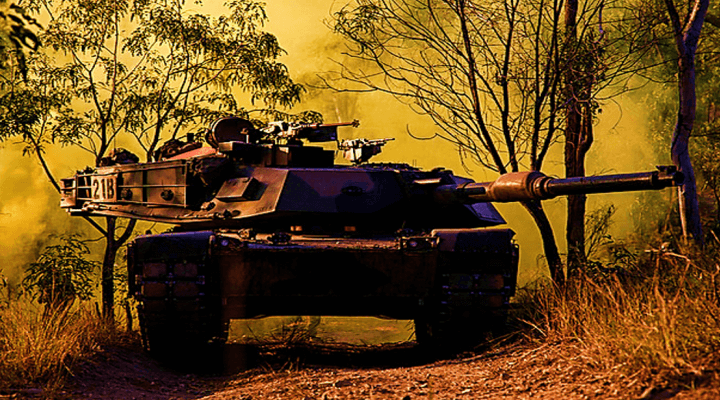Last Friday, Gen. Mark Milley, the Army’s chief of staff, spoke at a National Press Club luncheon on Army readiness and the “security challenges” facing the United States. It should come as no surprise he thinks North Korea is the most direct and immediate threat, and that Russia is the “most capable” (although he went out of his way to stress what we’ve discussed here in the past: Russia is not an enemy, since that label requires an active armed conflict).
In the Q&A that followed his remarks, he was asked a question about ground combat vehicles that revealed some innovations happening within the Army’s research and development organizations.
THE ARMS RACE NEVER REALLY ENDED
Milley can be very entertaining in these public forums. Recall his blunt but humorous statement last year about the arduously slow Pentagon procurement process. “We’re not figuring out the next lunar landing. This is a pistol. Two years to test? At $17 million?” he told an audience at the New America think tank in March 2016. “You give me $17 million on a credit card, and I’ll call Cabela’s tonight, and I’ll outfit every soldier, sailor, airman and Marine with a pistol for $17 million. And I’ll get a discount on a bulk buy.”
True to form, Milley didn’t shy away from diving into the procurement process, although this time to praise it, not denigrate it. A written question from an audience member mentioned the Russian intent to field its innovative T-14 Armata tank by 2020, and whether Miley and other leaders fear the U.S. and NATO might all behind in ground vehicle design and capability.
Milley admitting “we do need a new ground armored platform,” stating his belief that there will be a role for armored formations in ground combat for at least the next 25 years (probably longer). He said he had an “entire group of people digging into” the issue of not just a new tank, but a new family of ground combat vehicles. (He’s presumably talking about TARDEC, the U.S. Army Tank Automotive Research, Development, and Engineering Center at the Detroit Arsenal).
Th biggest leap Milley hopes his researchers will come up with, which he called the “Holy Grail,” is a new type of armor that provides the same protection of the Abrams current combination of steel, depleted uranium, and ceramic composite armor, without the weight of the current variant.
He also teased advances in rail guns and lasers as replacements for the standard “powder-based” kinetic weapons that have been the staple of armored vehicles since their invention.
THE ABRAMS WILL BE WITH US FOR QUITE A WHILE, STILL
Milley didn’t give a timeline or a projected budget for this effort, however. Development of the M-1 Abrams began in 1972 following the cancellation of the MBT-70 program. Chrysler delivered the first prototypes in 1976 and the first tanks arrived at the 3rd Infantry Division in Germany in 1980. (Personal side-story: when 3rd ID got the M1A1 in 1989, those original tanks went to the 5th Infantry Division; as a 5th ID tank platoon leader, one of my tanks was XM1 serial number 256).
In announcing last week’s directive for the Defense Department to study the industrial base’s capabilities and gaps, Office of Trade and Manufacturing Policy Director Peter Navarro mentioned that the military-industrial complex (he didn’t actually call it that) hasn’t designed a new ground combat vehicle since the M-1 Abrams Main Battle Tank and the M-2/M-3 Bradley Infantry and Cavalry Fighting Vehicles were developed in the 1970s.
The 2009 cancellation of the ground vehicle portion of the Future Combat Systems program pushed the timetable for a new tank further “to the right.” In the meantime, the M-1 Abrams, now in its M1A2 SEPv3 incarnation (SEP stands for “System Enhancement Program”) bears little resemblance to the original M1 beyond its external appearance. The tank has evolved into what engineers call a “system of systems,” differing capabilities developed independently that together form a final product.
So how long will it be before we see a new tank in the Army? Probably a very long time. Look at the development of fighters. The F-16 went from drawing board to first flight in just four years, joining the force two years after that. The F-22 was in development for five years before it first flew in 1991; it didn’t join the force until 2005.
And development of the much-maligned F-35 began in 1996, with its first flight coming 10 years later; the first operational squadron of F-35s hit the runway just last year. Expect the development of a new ground combat vehicle to take that long, too.




